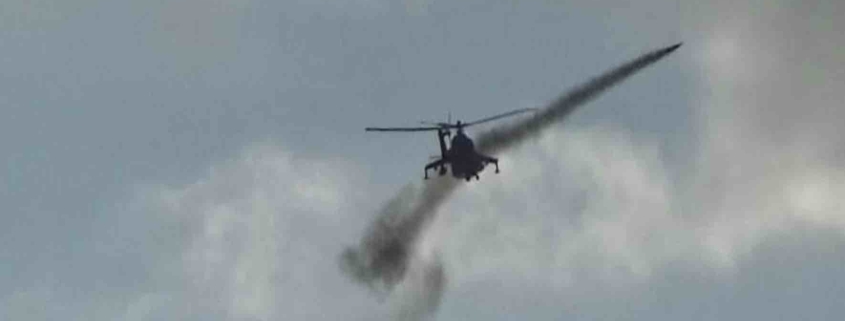Girl, 7, Among Three Civilians Killed as Myanmar Junta Bombs Camp for War Displaced
The Myanmar junta’s indiscriminate aerial bombing killed three civilians including a 7-year-old girl in a displacement camp in Kayah State’s Hpruso Township early on Monday.
The junta extended into northern Hpruso the air raids and artillery attacks it has been conducting against the Karenni Nationalities Defense Force—an armed group resisting the military junta—in Demoso and the state capital Loikaw since early this month.
The three victims—a 7-year-old girl, an 18-year-old woman and a man in his 50s—were killed when at least two helicopter gunships dropped four bombs at around 1:15 a.m. on Monday, according to a Hpruso resident, who spoke on condition of anonymity.
They were from Moso Village, where the charred bodies of at least 35 civilians were found on Dec. 24 after a raid by junta soldiers. Residents of Moso and nearby villages are taking shelter at the displacement camp, which hosts some 600 people.
The 7- and 18-year-olds were sisters. The girl suffered serious stomach wounds and the older sister’s body was severed in two. The man was struck in the back by shrapnel that pierced his chest, said the resident.
He added that there was no fighting between the junta and resistance groups in Hpruso’s Ree Khee Buu Village, where the IDPs were taking shelter at the time of the airstrikes. Junta aircraft had been seen continuously hovering above the villages and towns in the area, he said, adding that more than likely the junta was capturing drone footage.
More civilians were displaced in the western part of Hpruso following the Moso incident and the continuous artillery attacks in nearby areas, with more than 6,000 locals having been forced to flee, according to the Hpruso resident.
The junta has intensified its airstrikes in Myanmar’s smallest state, where many of the some 300,000 population have taken up arms to fight against the military dictatorship, following the junta’s lethal crackdown on peaceful anti-regime protesters in the wake of the Feb. 1 coup. More than half of Kayah State’s population has been internally displaced since May.
The junta attacked with aircraft in Loikaw’s Nanmekhon town and Monglon ward, following shootouts in Monglon on Sunday morning that inflicted heavy casualties on the junta troops, said the Demoso Township’s People’s Defense Force (PDF), which took part in the fight.
After more than a week of junta attacks from both air and ground, over half of Loikaw’s residents have fled their homes and are seeking refuge in nearby Shan State and in central Myanmar towns.
U Htay, a Loikaw resident, said, “We have seen fighter jets firing into empty homes after [earlier] airstrikes on Jan. 8, Jan. 12 and Jan. 16, as many people have left the capital since last week. The aircraft circle above the town all the time,” he said.
The military junta’s Office of the Commander-in-Chief of Defense Services released a statement on Sunday stating that during their “security operations”, regime forces cracked down on local PDF groups with artillery and aircraft in Loikaw’s Monglon ward and Nanmekhon town on Sunday afternoon.
It said, “The Tatmadaw [Myanmar’s military] attacked the terrorists with the air supporting fire and artillery fire,” accusing the PDFs of taking refuge in homes in Mongla ward, distributing ammunition in Nanmekhon and recruiting people.
Residents were leaving despite the junta setting up many military checkpoints in Loikaw and strictly checking people in and out of the capital.
U Htay also planned to leave his home on Monday, as the artillery fire could be heard continuously. He was among those who stayed in the town until Monday hoping the conflict would cease. The junta has also cut off electricity and Internet communication in the capital, forcing him to flee and leave behind all his possessions.
“The capital is now becoming a ghost town with no movement there. The situation is going back to the era where we had to fear everything,” he added.



